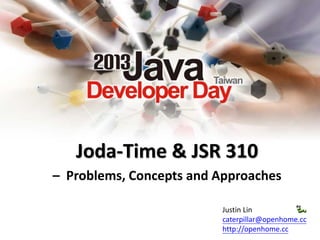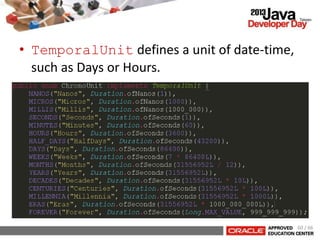The document discusses issues related to date and time handling in programming, specifically addressing problems with Joda-Time and JSR-310. It highlights the complexities of date manipulation, the distinctions between human and machine interpretations of time, and introduces key concepts like instant, duration, and chronology. The document also compares Joda-Time with JSR-310 while suggesting that both can simplify date and time management in software development.

































































